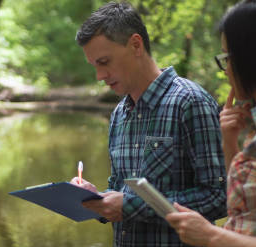Launching a weather balloon may seem straightforward, but doing it correctly requires precision, preparation, and knowledge of environmental conditions. Whether for professional meteorology or educational experiments, using the right launch techniques ensures accurate data and a safe flight path.
Pre-Launch Preparation
-
Weather Check: Avoid storms and high wind speeds. Launch during calm conditions.
-
Permissions: In some countries, launching above certain altitudes requires airspace clearance (e.g., FAA in the U.S.).
-
Tracking Equipment: Ensure GPS, radiosonde, and communication devices are working.
-
Payload Balance: Double-check payload weight for optimal lift and burst timing.
-
Helium/Hydrogen Supply: Use the correct amount based on payload weight and desired altitude.
Launch Site Best Practices
A successful weather balloon launch often depends on location and setup:
- Choose an open field far from power lines and tall structures.
- Lay out the balloon and payload components beforehand.
- Inflate the balloon with help or tie-downs to prevent premature release.
- Use gloves when handling the balloon to prevent oil damage.
- Ensure all electronics are powered on and logging data.
Launch Techniques Compared
| Technique |
Best For |
Drawback |
| Hand Launch |
Light payloads and calm conditions |
Less control in windy weather |
| Tethered Release |
Training or crowded areas |
Requires extra equipment |
| Helium Bag Assist |
Precise lift adjustment |
More complex setup |
| Automated Release |
Research stations, remote launches |
Expensive and technical |
Who Uses These Launch Techniques?
Various groups launch weather balloons, each with different requirements:
-
Government Meteorological Agencies: Perform regular launches for data collection and forecasting.
-
Universities & Researchers: Test theories and study atmospheric layers with specific instruments.
-
Amateur Scientists & STEM Programs: Conduct experiments and student-led missions.
-
Space & Aeronautics Teams: Test electronics or simulate near-space conditions for equipment.
-
Military & Aviation Experts: Launch for tactical weather intelligence and mission planning.

Frequently Asked Questions (FAQs)
-
How much helium is needed for a weather balloon?
- Typically 3 to 6 cubic meters, depending on payload weight and balloon size.
-
Can I launch a balloon from any location?
- You should choose remote, obstacle-free areas and check for local airspace regulations first.
-
What happens if the balloon hits a plane?
- This is extremely rare. Coordination with aviation authorities and standard procedures helps prevent this risk.
-
Do you need a license to launch a weather balloon?
- Not always, but launches above a certain height may require FAA or national aviation authority notification.
-
What’s the best time of day to launch?
- Early morning or late evening often provides calmer conditions and better data reliability.
Related Posts

Bob Batemen is a dedicated contributor to WeatherScientific.com, bringing a wealth of expertise in weather management and environmental science. Bob combines a deep understanding of environmental systems with practical experience in weather forecasting, climate patterns, and the implementation of sustainable weather-related solutions. Over the years, Bob has developed a keen interest in how climate change impacts global weather patterns, disaster risk management, and the mitigation of extreme weather events.
Bob's professional experience spans both private and public sectors, where they have contributed to the development of weather-sensitive infrastructure, environmental policy, and climate adaptation plans.
As a contributor to WeatherScientific.com, Bob shares insightful articles, guides, and analyses on emerging weather trends, cutting-edge weather technologies, and their environmental implications. Their passion for blending science with practical applications continues to shape their work, providing readers with valuable, informed perspectives on the ever-evolving world of weather and environmental management.





Leave a comment